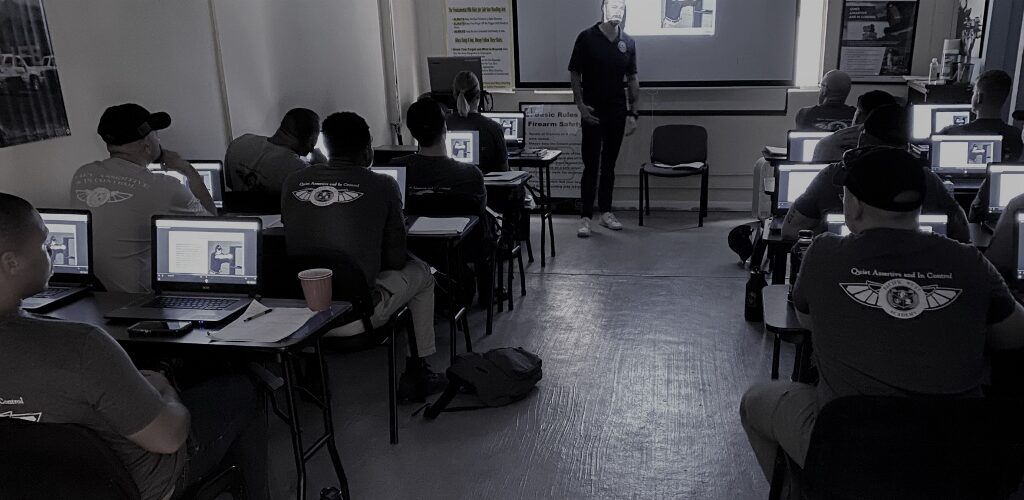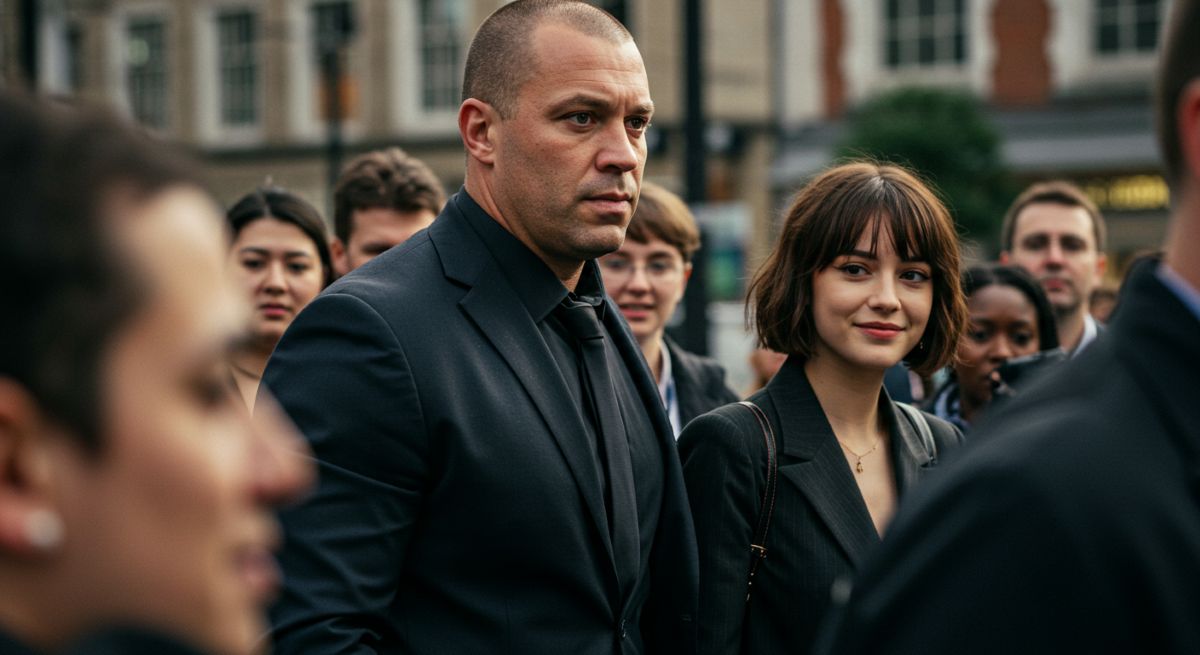

Advanced Tactical Operations in Executive Protection
Advanced Tactical Operations in Executive Protection
From First Shot to Legal Survival
Part 1: The Engagement — Core Combat Tactics for Executive Protection
Meta Description: Discover elite tactics taught in executive protection training, close protection training, and VIP protection. Learn how surprise, positioning, and commands save lives.
In the world of executive protection, the difference between life and death is measured in seconds and decided by the quality of one’s training. The romanticized image of a bodyguard is a dangerous fiction; any credible executive protection training course teaches that the modern operative is a thinking combatant, a practitioner of psychological warfare who uses tactics to stack every possible advantage in their favor. This is Part 1 of an in-depth series drawn from an advanced training session at our executive protection school, designed to move beyond basic concepts and into the strategic thinking that defines elite bodyguard training. We will dissect the core principles of winning a violent encounter, not just through force, but through superior intellect and tactics.
Foundational Principles: The Unchanging Laws of the Gunfight
Every tactical decision flows from a deep understanding of the fundamental laws that govern a lethal force encounter. Mastering these principles is a non-negotiable part of any close protection training.
The Supreme Importance of Surprise
More than gear, more than skill, more than aggression, the single most decisive element in a gunfight is surprise. An untrained individual with the element of surprise can defeat a seasoned professional. This is why every action you take upon approach must be calculated to preserve this advantage. The way you open a door, the noise you make, the shadow you cast—all of it matters. For instance, an instructor noted that knowing the layout of a building, like your own house, allows you to choose an entry point that maximizes your advantage and minimizes your signature, a decision that can win the fight before it begins.
The First Shot Advantage & The 50/50 Fight
If surprise is lost, the next most critical factor is the ability to deliver the first effective shot. This isn’t just about speed; it’s about positioning. If you pop through a door and the shooter’s back is to you, you have both surprise and the first shot. If they are looking in your general direction, you may still have the first shot if they haven’t seen you yet. However, if the shooter is waiting for you, looking directly at your point of entry, you are now in a dangerous “50/50 gunfight.” Your success in this scenario depends entirely on your skill level and your use of cover versus theirs. Understanding this hierarchy—Surprise, then First Shot—is what allows you to assess risk and make the correct tactical decision in a split second.
The Psychology of Aiming: Why Hands Get Hit
A critical but often misunderstood concept taught in our bodyguard courses is how the brain processes a threat. The act of aiming does not begin when your sights are aligned; it begins the moment your eyes lock onto the target. In a gunfight, your brain will instinctively identify the primary threat. Do faces kill you? No. The gun does. Your eyes will become glued to the attacker’s weapon. Consequently, when you draw and point your own weapon, you will naturally, often unconsciously, point it at what your eyes are hyper-fixated on: the gun. This is precisely why so many people, including police officers, get shot in the hand. It’s not necessarily an intentional shot but a biological reality of how we respond to threats under extreme duress.
The Tactical Toolbox: Advanced Concepts for Controlling the Fight
With the foundational principles as a base, an operative can then employ advanced techniques—the kind that earn a reputable close protection certificate—to manipulate the engagement and ensure a successful outcome.
Flipping the Script: The Power of Changing Elevation
Picture this scenario: You enter a hallway and a barricaded suspect, who was waiting for you, gets the first shot off. You are now at a disadvantage. The amateur freezes or panics. The professional immediately works to “flip the script.” In a training debrief, the instructor explained his exact process: he immediately realized the suspect had first shots, so he changed elevations by dropping low. This simple act is profoundly effective. The suspect’s brain is now trying to reacquire a target that is no longer where it was a moment ago. That cognitive lag, a processing delay, is the professional’s window of opportunity. In that window, the instructor fired back, forcing the suspect to retreat behind their cover. In that single sequence, the tactical advantage was flipped. The instructor now controlled the hallway, and the suspect was the one who was trapped and reacting.
Debunking the “Fatal Funnel” Myth
Tactical dogma often labels doorways and narrow hallways as “fatal funnels” that must be breached and cleared as quickly as possible. This is a dangerous misapplication of military and SWAT doctrine to the world of VIP protection. A location only becomes a “fatal funnel” if two conditions are met: bullets are moving through it, and people are being forced to move through it. In military operations, entry is often mandatory. An instructor recounted his first deployment where, as a young Marine, he froze for a moment and was physically pushed into a room because the team had to go in. But in an EP scenario, you are usually alone and are not required to make entry. You can—and should—use the doorway as a piece of cover to fight from. You can work the angles, change levels, and engage the threat without ever fully exposing yourself. The “funnel” is only fatal if you voluntarily step into it when you don’t have to.
Words as Weapons: The Unmatched Power of Strategic Commands
In a crisis, words are tools that can either save your life or get you killed. Any comprehensive executive protection course must emphasize that every command has to be deliberate and designed to give you a tactical advantage.
The Critical Flaw of “Show Me Your Hands!”
For decades, law enforcement and tactical units taught recruits to yell “Hands, hands, hands!” or “Show me your hands!” This is now understood to be a deeply flawed command. The problem is that when you give this order, you are expecting movement, and you are implicitly ceding the decision to the suspect. You are allowing them to make the choice whether to comply or to bring their hands out with a weapon and shoot you.
A Psychologically Superior Protocol
A modern, strategic approach focuses on taking away the suspect’s ability to plan and act. If you encounter a person with their hands in their pockets, the command sequence should be:
- “Don’t fucking move.” This freezes the situation.
- “Turn around. Do not look at me.” This is the crucial step. By making them turn away, you remove their ability to see you, which is essential for them to plan an effective attack. It also misaligns their head and body, which has been demonstrated to physically reduce their strength and stability.
- “Pause. Slowly take your hands out of your pockets.” Only now, when you have control and they are at a distinct disadvantage, do you have them move their hands. This sequence transforms you from a potential victim of their decision to the absolute controller of the situation.
In Part 2, we will shift focus from the immediate gunfight to the broader strategic landscape—essential knowledge for anyone serious about obtaining a professional bodyguard certificate. We will cover active shooter psychology, post-engagement survival, managing the arrival of police, and the critical legal steps you must take to protect yourself after the incident is over.
